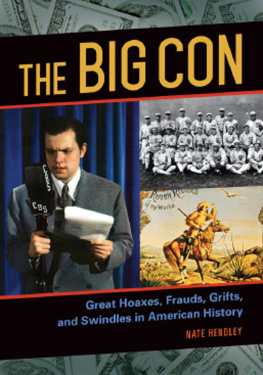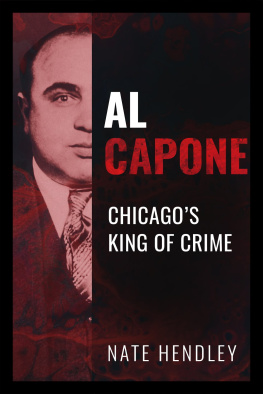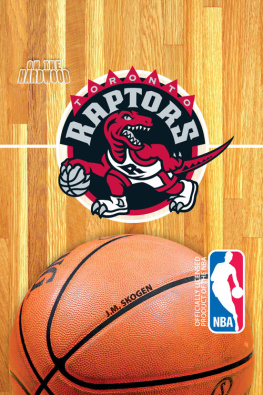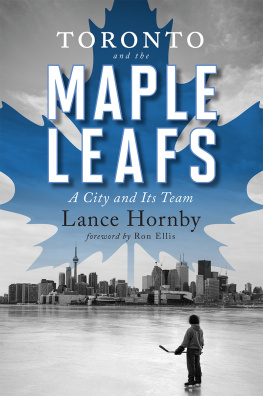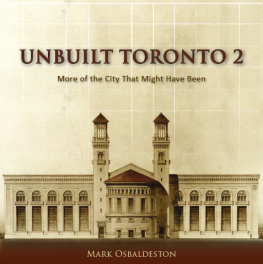
TO OUR READERS
Every effort has been made by authors and editors to ensure that the information enclosed in this book is accurate and up-to-date. We revise and update annually, however, many things can change after a book gets published. If you discover any out-of-date or incorrect information in the Toronto Book of Everything, we would appreciate hearing from you via our website, www.bookofeverything.com.
Copyright 2009 by MacIntyre Purcell Publishing Inc.
MacIntyre Purcell Publishing Inc.
232 Lincoln St., PO Box 1142
Lunenburg, Nova Scotia
B0J 2C0 Canada
www.bookofeverything.com
info@bookofeverything.com
All rights reserved. No part of this book covered by the copyrights hereon may be reproduced or used in any form or by any means without the prior written permission of the publisher. Any request for photocopying, recording, taping, or information storage and retrieval systems of any part of this book shall be directed in writing to the Canadian Reprography Collective, 379 Adelaide Street, West, Suite M1, Toronto, Ontario, M5V 1S5.
Cover photo courtesy of iStock.
Photos: iStock.
Printed and bound in Canada by Friesens.
Map courtesy of Tourism Toronto
Library and Archives Canada Cataloguing in Publication
Hendley, Nate
Toronto book of everything / Nate Hendley, Karen Lloyd, Tanya Gulliver.
ISBN 978-0-9784784-0-7
I. Toronto (Ont.). 2. Toronto (Ont.)--Miscellanea. I. Lloyd, Karen
II. Gulliver, Tanya III. Title.
FC3097.3.H46 2009 971.3541 C2008-905740-6
Introduction
Canadas largest metropolis has both working-class and blueblood roots and now sits firmly in the international cosmopolitan mainstream. Toronto may be the city the rest of the country loves to hate, but those who live there are generally and genuinely fond of it. And, really, why shouldnt we be? Toronto offers choices to satisfy any palate or inclination.
Like great cities everywhere, Toronto is also a product of its contradictions. It was our duty to include as many of them as we could, drawing what we hope is a multi-faceted portrait in tiny increments, a fact or a story at a time.
No one book can really be about everything, of course. As you might expect, our toughest decisions were not what to put in but what to leave out. For every tidbit or profile or anecdote that didnt survive the final trimming, we gave a collective sigh of sorrow and crossed our fingers that it would make the next edition.
As you might expect, The Toronto Book of Everything could not have been written without dozens of collaborators and supporters, and so there are a great many people to thank. At the top of the list are the hard-working staff at the City of Toronto Archives. Also a special thank you to our editorial director, Sandy Newton, and to John Maclntyre and Kelly Inglis at the home office.
Others who contributed include Danny Gillis, Gizelle Lau, Wendy Golman, Jane Doucet, and Earl Miller. Finally, our gratitude goes to those whose personal takes on this great city were shoehorned into lists of five at our requesttheir thoughts and their willingness to share them truly helped us make this book unique.
Tanya Gulliver, Nate Hendley, Karen Lloyd
Table of Contents
From 13,000 Years Ago to Present John Graves Simcoe Rabble Rouser Toronto, U.S.A. Karen Blacks Favourite Artifacts in the Citys Historical Collection The Boy in Blue Patrician Toronto 175th Anniversary
T.O.s Nicknames Jane Pypers Essential Reads You Know Youre From Toronto When Leafs Nation Geoffrey James Special Toronto Places John Robert Columbos Quips and Quotes Community Health Survey
From the AGO and the Buds to Short-Turning and the Vomit Comet, We Give You the Lowdown on T-Dots Lingo Pier Giorgio di Cicco Describes Toronto Phrases that Will Make You Sound Like a Local Desmond Coles Take on Urban Slang
Welcome to the Neighbourhood Major Cultural Celebrations Dr. Joseph Wongs Memories of Arriving in Toronto The Ward First Nations, Irish, Jews, Chinese, Italians, Portuguese Non-English Radio Gay Toronto Dan Yashinskys Top Storytelling Destinations Johnny Lombardi
Ecological Footprint Oldest Buildings Jacobs Ladder John Sewells Buildings Not to Miss Neighbourhood ABCs Must-See Outdoor Sculptures Lost Rivers and Tower Tales Charles Pachters Moose-Viewing Locations Tallest Office Towers Toronto Islands Jack Layton and Olivia Chows Favourite Bike Tours
And the Winner Is David Phillipss Top T.O. Weather Extremes Five Ways to Say its Cold Storm of the Century Call in the Troops Skyline Weather Forecasts Favourite Winter Activities Weird Weather Facts Green Change
Genius Legendary Music Venues Dave Bidinis Favourite Toronto Songs Thats an Order Amy Harris Iconic Novels about Toronto Nino Ricci Festivals that Showcase the Arts Walk of Fame Longest Running Theatre Productions Rush Master of Gore TIFF
Kensington Market Best Artisan Cheese Shops Linda Leatherdales Top Power Lunching Locales Best Pizza Pits Five Ways T.O. Inspires Jamie Kennedys Menu Gizelle Laus Coffee Break Spots Food Neighbourhoods Best Brunches Brewpubs
GDP and Taxes Bay Street Lingo You Said How Much? Toronto Billionaires Ed Mirvish Paul Godfreys Top Powerbrokers House Prices and Renting First Baron of the Fleet Key Employment Sectors Kevin OLearys Uniquely Toronto Innovations
Then and Now Price Hikes Great Fire of 1904 Bruce Bells Favourite Historic Rooms Stork Derby Alexander Wood People Who Inspired Street Names Casa Loma Toronto Inventions Holy Trinity Come One, Come All
Corporal Punishment in Old Toronto James Dunbro Lists Infamous Mob Hits Settling Scores in Old York Curious Case of Clara Ford Gentleman Bandit Sex, Lies and Videotape Cold Cases Crime by the Numbers
Government Today Memorable Mayors Mayor David Millers Favourite Things about T.O. Matthew Blacketts Top Battles that Preserved Torontos Spaces Getting and Spending Government Dough God in Politics Controversial Quotes from Mel Lastman No Barenaked Ladies

Toronto:
A Timeline
About 13,000 years ago: Glaciers retreat from southern Ontario and leave behind large lakes, including Lake Iroquois, which encompasses present-day Lake Ontario.
About 11,700 years ago: Lake Iroquois begins flowing to the sea through the St. Lawrence River rather than down the Hudson, which drops the lakes level and changes its shoreline.
About 10,500 to 11,000 years ago: The first nomadic aboriginals arrive in the Toronto area from the south, following game. The lake level is lower than it is today; the northern shoreline is 20 km further south.
Between 7,000 and 2,000 years ago: Lake Ontario rises and the Scarborough Bluffs begin to erode, creating the current shoreline and eventually leading to the formation of Toronto Island and the harbour.
500 AD: Aboriginal communities grow and become more settled. Populations of about 500 live near each of the large rivers in the Toronto area.
Around 600: Aboriginal people plant corn, beans and squash. Agriculture grows in importance. Over the next 400 years, crop-growing Iroquoian societies in the area gradually become classic longhouse communities.
Late 1500s to early 1600s: The Iroquois move north, and Huron tribes use the area as hunting grounds.
Mid-1600s:
Next page

